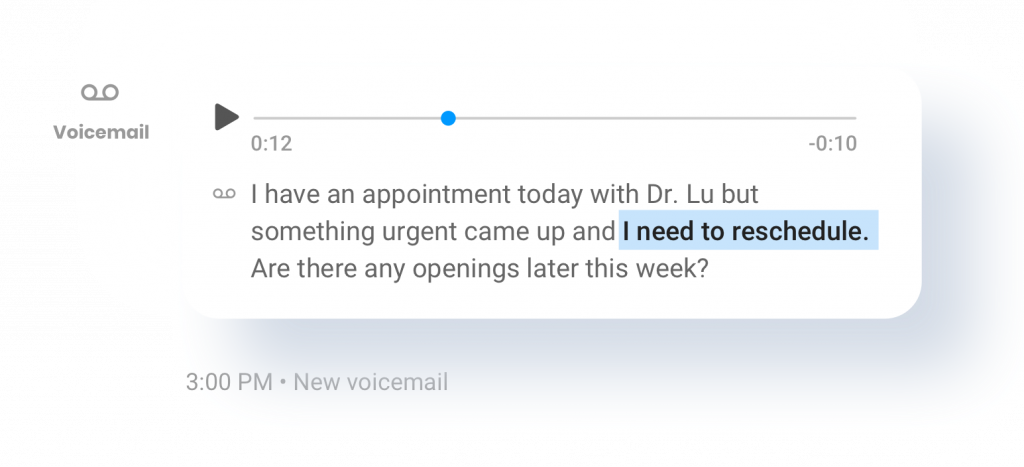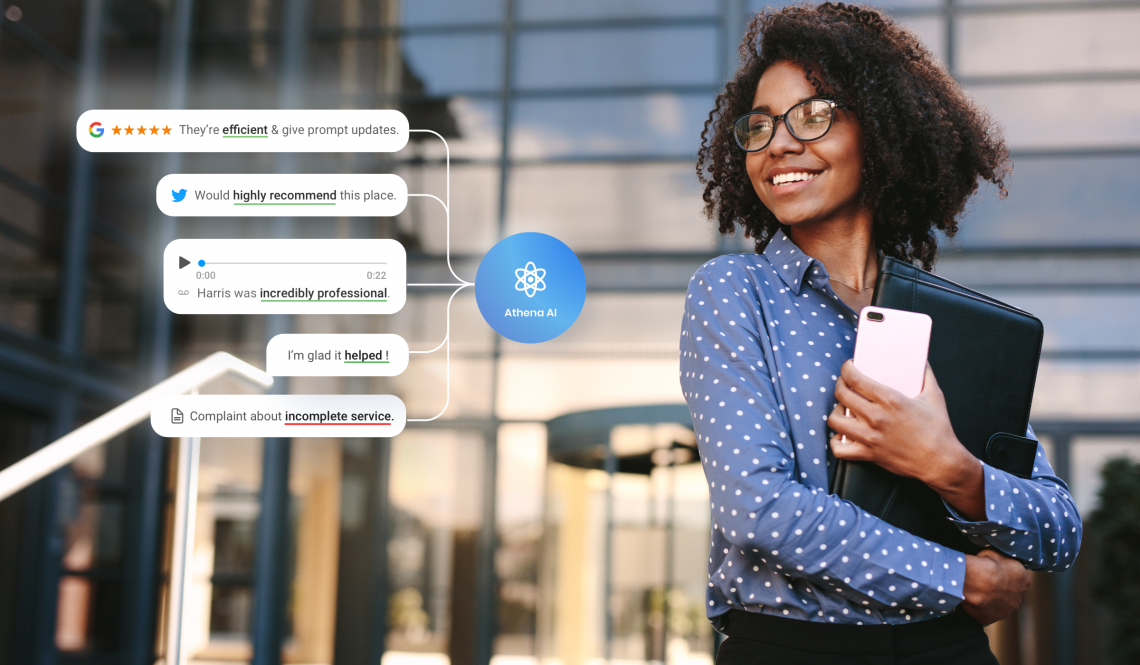Table of contents
In the last decade and a half, we’ve seen a dramatic shift in consumer habits. It all started with the release of the iPhone in 2007. Now, every customer has a computer in their pocket and access to the opinions of the entire world at their fingertips.
Why does this matter for businesses? This shift means that we’re living in the experience economy, where customers are more connected than ever before.
Nowadays, it’s no longer the businesses with the best marketing campaigns that win. After all, a fantastic Facebook or Google ads campaign may go to waste if a customer Googles a business and only sees 1-star reviews. On the other hand, businesses that consistently deliver great experiences are the ones that stand out.
But winning in the experience economy is no easy task. In this article, we’ll explain why many multi-location businesses have had trouble adjusting to the experience economy and how artificial intelligence can help them make the transition.
Three consequences of the experience economy
The rise of the experience economy has led to a massive shift in customer expectations. Here are three of the biggest changes in the post-iPhone world that have contributed to this shift:
- Customers expect more from brands than ever before: In earlier times, businesses relied on factors like price and product to stand out from the competition. But now, experience is the #1 factor that customers are looking for when making purchase decisions. That means a lack of focus on CX is no longer an option.
- Bad experiences have big consequences: Since customers are so connected, a single bad experience can lead to serious harm. An angry customer can leave a bad review, post a critical social media post, or spread negative word-of-mouth. Studies have found that it takes 12 positive experiences to make up for a single negative experience.
- Customers expect personalization: Nowadays, customers are looking to be treated as individuals rather than numbers. That means businesses need to be able to use data to serve their unique needs. 59% of customers say that tailored engagements based on previous interactions are critical for earning their business.
To win in the experience economy, multi-location businesses need to deliver great experiences at every touchpoint. Of course, doing this at scale is no easy task.
The bigger the business, the less personalized the service
Businesses today are more conscious of the need to provide best-in-class experiences. Many of them are trying their best to adapt to the new paradigm. But delivering personalized experiences across the board can be quite complicated and labor-intensive. Add to this complexity of having multiple locations, often in very different geographies – which adds another layer of difficulty that businesses need to negotiate.
This is what we call the scale gap. Businesses struggle to deliver personalized experiences to their customers at every touchpoint and at scale. The bigger a business gets, the harder it is for them to deliver these essential personal experiences and get in contact with customers in a timely manner.
But luckily, there is a solution. Artificial intelligence solutions can have a huge impact in closing the scale gap both on an individual level and in the aggregate.
How David’s Bridal uses automation to close the scale gap
You’ve probably heard of David’s Bridal, the international wedding dress retailer with 300+ locations in the United States, Canada, Mexico, and the United Kingdom. What you may not know is that the company uses AI to deliver magical experiences in every interaction.
David’s Bridal solicits reviews from customers across all their locations. Within those reviews, customers often mention issues they might have encountered during their interaction with the company. While this is valuable feedback for David’s Bridal, it’s impossible for the business to manually sort through the mountains of unstructured review text data across locations.
That’s where artificial intelligence comes in. David’s Bridal uses Birdeye’s Natural Language Processing (NLP) engine, Athena, to analyze and categorize the reviews for each and every location. Athena uses AI to analyze customer sentiment within review text and grades individual locations on specific categories. When a location is underperforming in a specific category, leadership can get in contact with the location manager and make sure that the issue is fixed right away.
These efforts have paid off in a big way. David’s Bridal now has more than a 4.4 overall star rating with more than 600,000 reviews across locations. That’s higher than any of the company’s competitors and a testament to both the dedication of the team and the power of AI.
Of course, NLP isn’t the only way that businesses can leverage AI to close the scale gap. Artificial intelligence can also be used to power everyday customer interactions.
Closing the scale gap with AI chatbots
While NLP can help businesses identify issues with customer experience in the aggregate, some businesses simply don’t have the resources to deal with every customer chat, phone call, email, and Facebook, Google or Instagram Message in a timely manner. That’s where AI chatbots can help.
Chatbots are certainly not new. The first chatbot was created by IBM way back in 1966. But traditionally, chatbots required customers to navigate through menus to get the experience they wanted and could only provide preprogrammed answers to simple questions. But AI chatbots take the experience to another level.
Just like the human brain, AI chatbots use neural networks to identify patterns in data inputs and provide appropriate responses to customers and prospects.
For example, a customer might ask a restaurant, “What are you serving?” instead of “What’s on the menu?” While a rule-based chatbot may not be helpful in this situation, an AI chatbot will be able to answer the question because it’s trained to understand the language customers are actually using. ” That’s part of the reason why the consultancy firm Servion believes that artificial intelligence will power 95% of all customer interactions by 2025.
Let’s explore a couple more ways that AI chatbots can help to close the scale gap.
Answer voicemails
Many multi-location businesses simply don’t have the resources to immediately answer every customer call. Unfortunately, many customers who get left on hold simply hang up. By the time representatives are able to talk with them, they might be gone forever. Studies show that 85% of customer missed calls aren’t going to call back.
But there is a way you can automate this process to ensure that the conversation continues. When customers leave a voicemail, a platform like Birdeye can automatically turn that voicemail into a transcript. The chatbot will then extract intelligence from the voicemail and automatically respond to the customer via text message.
For example, a customer may leave a voicemail that looks something like this:

The chatbot will then send a text message listing all the open appointment times for the week. Even if you don’t have enough representatives to handle the question, chatbots can ensure that it’s taken care of in a timely manner.
Understand the customer journey
AI chatbots can help to deliver personalized experiences across the customer journey. Different chatbots on different pages of your website can engage with prospects and push them to the next stage of the sales funnel. For example, an AI chatbot on your pricing page can deliver customers the information they need to make a purchase.
Through thousands of interactions with prospects, AI chatbots steadily become better and better at providing relevant content for prospects. AI chatbots can even A/B test different scripts to see which works best for engaging prospects.
Deliver fantastic customer experiences
Failing to meet customer expectations has serious consequences in the experience economy. But with technologies like Natural Language Processing and AI chatbots, your business can take a big step towards closing the scale gap and wowing customers at each interaction.
Want to know more about how you can deliver great customer experiences across all your locations? Check out our comprehensive guide to CX. It contains a few tips that you can’t find anywhere else.

Originally published









